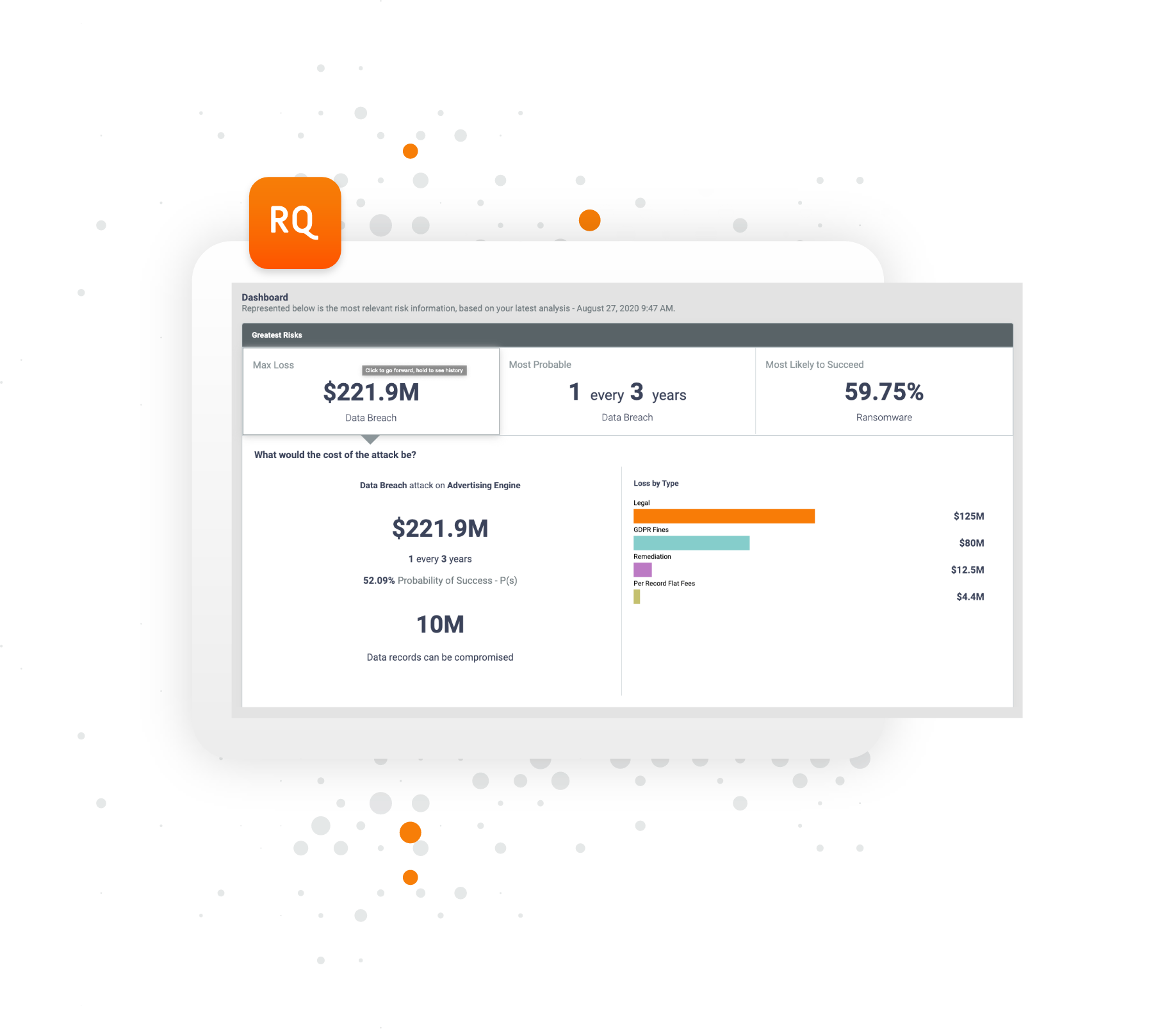Posted
Many businesses may have heard of cyber risk quantification (CRQ), but most businesses still don’t know what their exposure is to any given cyber event. And how could they when their security teams are presented with thousands of Common Vulnerabilities and Exposures (CVEs) that all have the highest severity rating?
One of our most important job functions as cybersecurity professionals, however, is to mitigate risk and protect the business from harm. We do this by quantifying cyber risks in both operational and financial business terms and prioritizing those risks that matter most to our business.
Prioritize, Focus and Manage Risk
Cyber Risk Quantification (CRQ) is a critical part of cybersecurity that will fundamentally change the way security works and how risk is communicated to business stakeholders. CRQ technology gives security teams the tools to translate cybersecurity into financial risk and business impact which allows for proactive cyber defense and data-driven decision making across the board.
Translating cyber risk into financial and operational terms clearly shows business leaders and board of directors the most dangerous risks and determines the actions needed to mitigate those risks. And when this process is automated, it removes the guesswork that historically has been the weakest link in manual efforts to quantify risk.
Invaluable Business Benefits
By enacting practices to better communicate risks to the boardroom, your organization can benefit in the following ways:
- Key stakeholders from the board to the C-suite can clearly see potential risks and impacts
- CISOs and security leaders can demonstrate how much risk-specific investments and initiatives will eliminate
- Seeing a holistic view of the organization’s risks with metrics such as impacts on business production, damage to the business’s reputation, and any potential secondary losses, gives executives the opportunity to proactively push for action on security initiatives
- Bridging the communications gap between cybersecurity and the business helps reduce complexity, improves decision making, and allows security teams to focus on keeping the business safe
Traditional approaches to CRQ have been highly manual, can take months or years to see results, and often cost hundreds of thousands of dollars or more. With automation, CISOs can have a business conversation about cyber risk in weeks, not months.
Automated CRQ leverages user inputs and multiple data sources such as regulatory data, insurance claims, financial data, breach reports, and a wealth of security and threat intelligence. When the data is applied to the risk model, CISOs are armed with:
- Top cyber risk scenarios as defined by their financial impact
- Communication of cyber risks and financial impact that resonates with the rest of the business
- Recommended actions for improvement prioritized by ROI
